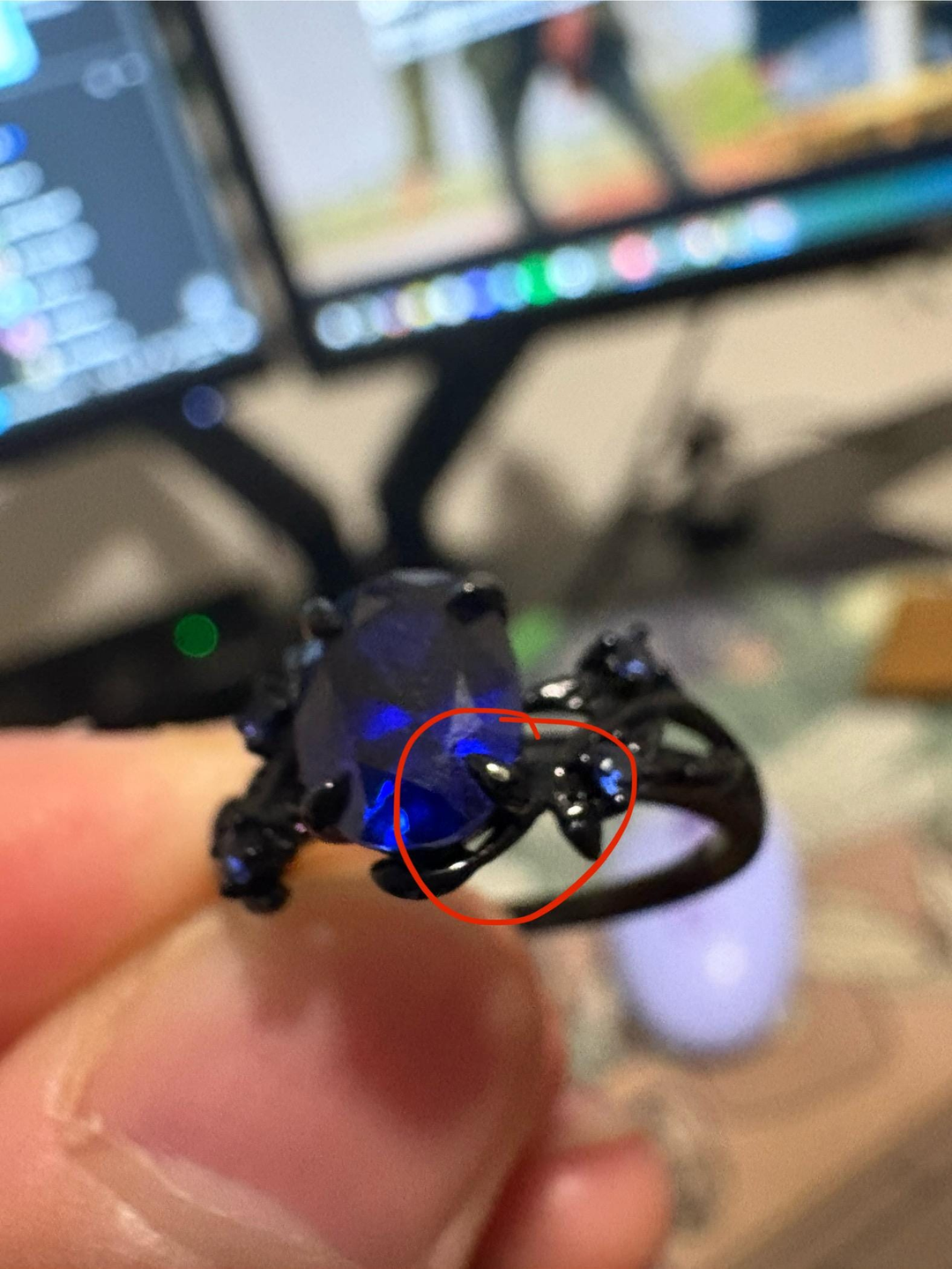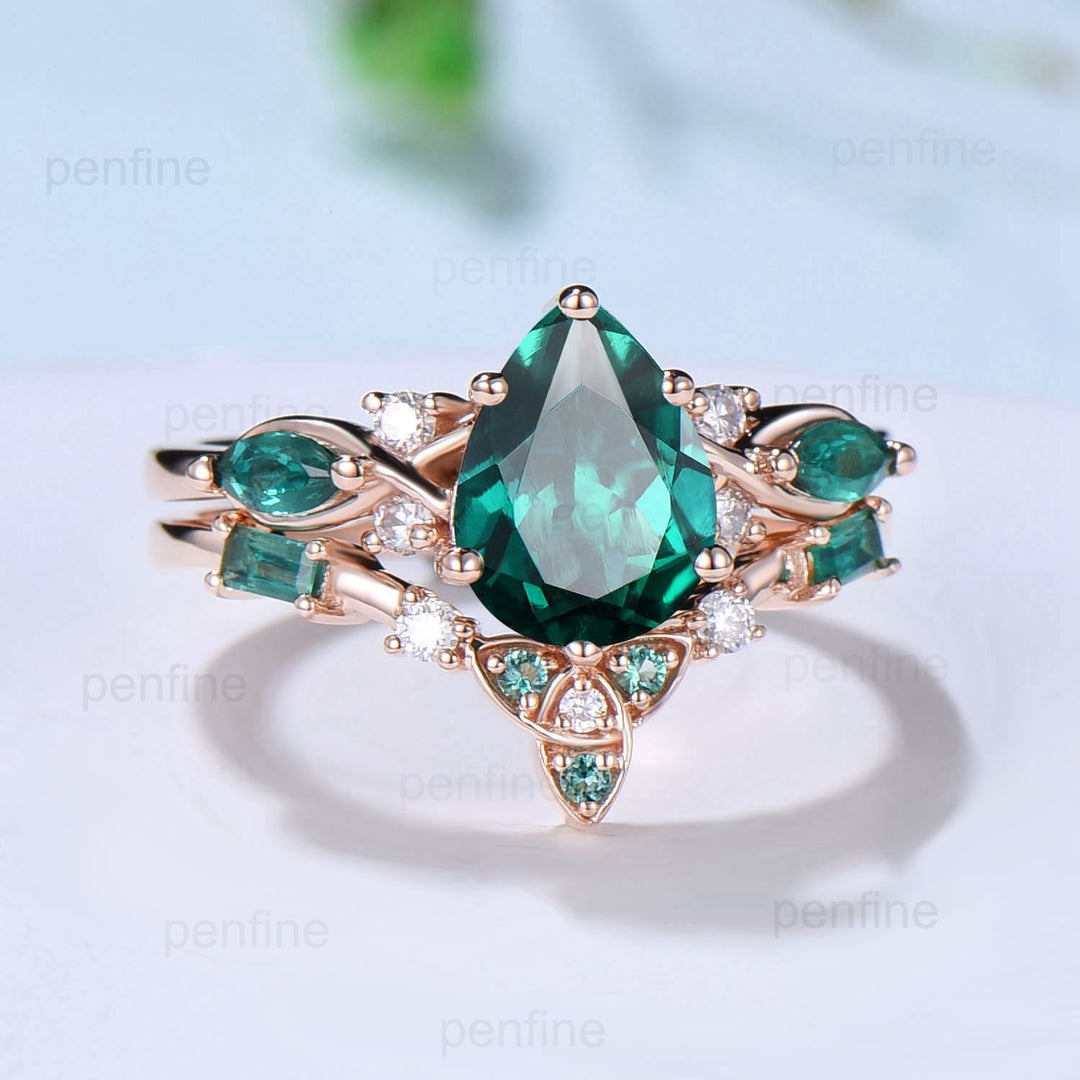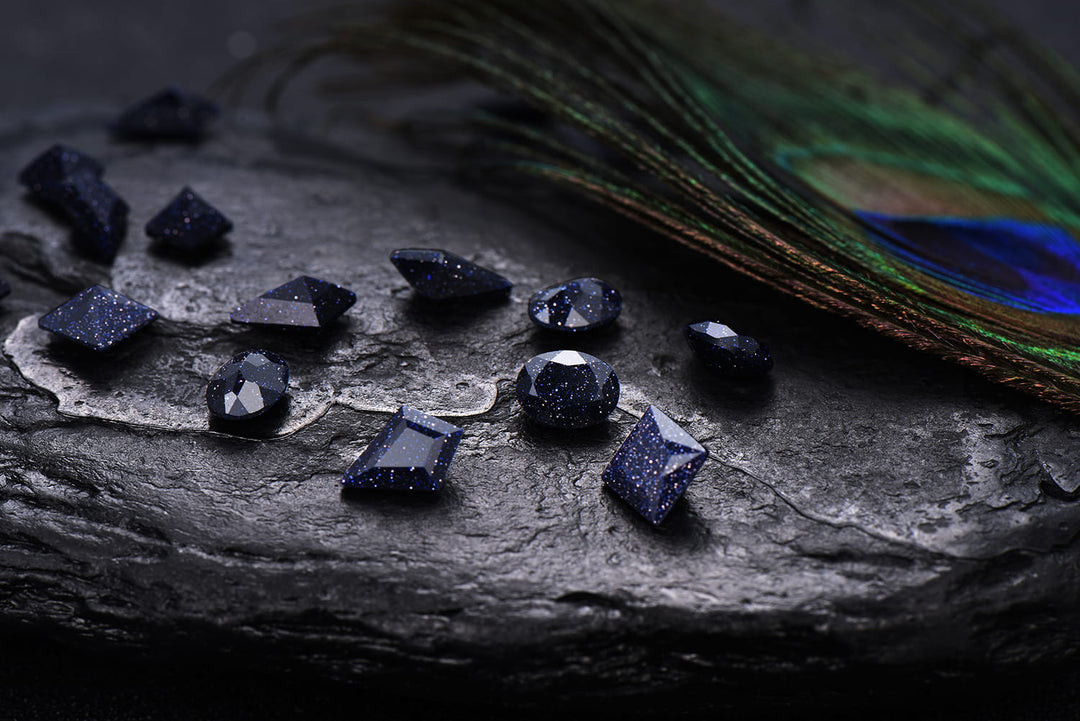A Comparison Between Lab-Created Diamonds and Moissanite
Lab-grown diamonds and moissanite serve as popular, budget-friendly substitutes for natural diamonds, offering the attraction of a fine gemstone for jewelry and engagement rings at a more accessible price point. While both lab-grown and mined diamonds tend to be pricier and are often perceived as more luxurious, moissanite is a distinct and more affordable option.
A common misconception is that moissanite and lab-grown diamonds are identical; however, they differ not only in appearance but also in cost and in other ways. In this article, we will try to show the differences between lab-grown diamonds and moissanite so that you can decide what would suit you best.

History of Lab-created Diamonds vs Moissanite
It's fascinating to think that natural diamonds were first found in Indian caves around 4 to 6 B.C. In contrast, the story of moissanite is quite different - it was discovered quite by chance by Henri Moissan. In 1893, Henri Moissan, a French scientist, was exploring a meteorite impact site in the Arizona desert. This ancient space rock had crashed there about 1000 years ago, creating a vast crater. Moissan was on a quest for materials to create new crystalline chemical compositions for better electrical conductivity. Instead, he stumbled upon something unexpected and extraordinary, mistaking it for a diamond.
Back in his lab, further analysis revealed that what Moissan had found was actually silicon carbide, a rare and intriguing mineral. Years later, scientists would master the art of turning this mineral into a stunning gemstone, aptly naming it "Moissanite" in honor of Dr. Moissan.
Nowadays, this lab-made marvel is cherished much like lab-grown diamonds, celebrated for its dazzling looks, resilience, and more affordable price. Isn't it amazing how a chance discovery can lead to such a beloved gem?
What is a lab-grown diamond?
Lab-grown diamonds represent a scientific advancement where diamonds are synthesized in carefully regulated laboratory settings, replicating natural environmental conditions. This process enables the production of diamonds that possess identical physical and chemical properties to those found in nature. Contrary to the extensive time period natural diamond requires, often spanning millions of years, these laboratory-cultivated diamonds are developed within a mere 4-5 weeks.
In contrast to the unpredictability of natural diamond quality, the controlled laboratory environment affords a significant advantage: the ability to enhance the quality of the end product. This enables the consistent production of diamonds that are both colorless and devoid of imperfections, demonstrating a remarkable level of precision and quality control.
What is Moissanite?
Moissanite, also known scientifically as silicon carbide (SiC), is another synthesized gemstone, bearing both similarities and distinct differences when compared to lab-grown diamonds. This gemstone, characterized by its crystalline structure of silicon dioxide and carbon composition, is noted for its near-colorless appearance and its vibrant, rainbow-like luster. Introduced into the jewelry market in 1998, moissanite has gained popularity over time, largely due to its impressive brilliance and its relatively affordable cost.
Both naturally occurring and laboratory-created moissanite possess identical chemical compositions, ranking them among the hardest gemstones available in the jewelry industry, with a hardness rating of 9.25-9.5 on the Mohs scale. In recent times, it has become increasingly common to observe moissanite in various jewelry pieces, particularly as a central stone in engagement ring and wedding ring settings. This preference is partly attributed to moissanite's ability to exhibit a sparkle that often surpasses that of many lower-quality mined diamonds.
Distinguishing Between Lab-Grown Diamond rings and Moissanite rings
Key Differences
- Moissanite is available in a more limited range of colors compared to lab-grown diamonds. Specifically, it can be found in colorless, blue, green, and yellow variations, whereas lab-grown diamonds are additionally offered in pink, redand orange hues, in addition to the color varieties mentioned above.
- The density of moissanite stands at 3.2 g/cm³, whereas lab-grown diamonds possess a slightly higher density, ranging between 3.5 and 3.53 g/cm³.
- Structurally, moissanite consists of hexagonal arranged silicon carbide atoms,while lab-grown diamonds are comprised of carbon atoms in a diamond cubic crystal formation.
- Moissanite has a molecular weight of 40.10 gm, in contrast to lab-grown diamonds, which have a molecular weight of 12.01 gm.
- Moissanite is approximately 15% lighter in weight compared to synthetic diamonds.
- Moissanite exhibits a metallic luster, as opposed to the adamantine luster characteristic of lab-grown diamonds.
- The sizing of moissanite is typically based on its length and width in millimeters, unlike lab-grown diamonds, which are measured and sold by carat weight.
- The streak color of moissanite generally appears bluish-greenish-gray, while lab-grown diamonds display a colorless streak.
- Moissanite is significantly more affordable, costing about 90% less than lab-grown diamonds under comparable conditions.
- The melting point of moissanite is considerably higher, at 4946°F (2730°C), compared to that of a lab-grown diamond, which is 1292°F (700°C).
- In terms of diaphaneity(which is how transparent or opaque a gem is), moissanite ranges from transparent to opaque, whereas lab-grown diamonds can be transparent or translucent.
- Moissanite is characterized by its electrical conductivityability, a property not shared by lab-created diamonds.
- The creation process of moissanite in a laboratory setting is lengthier than that of lab-grown diamonds; moissanite requires 8 to 12 weeks for production, while lab diamonds typically take 4 to 10 weeks.
- Finally, moissanite is slightly softer than lab-grown diamonds, with a rating of 9.25–9.50 on the Mohs scale of mineral hardness, compared to the maximum rating of 10 achieved by lab-grown diamonds.
How Can One Differentiate Between Moissanite vs Lab Diamond?
These two gemstones, while similar in appearance, have distinct differences that are often subtle, but notable in aspects like sparkle, color, refraction, and price.
In terms of sparkle, moissanite exhibits greater brilliance compared to lab diamonds due to its unique chemical composition. Moissanite combines carbon and silica, with the latter contributing to its enhanced sparkle, unlike lab diamonds which are purely carbon-based.
Color-wise, moissanite typically displays a yellowish-greenish hue, distinguishing it from the broader color range of lab diamonds, which includes colorless and near-colorless, along with blue, red, or purple. A gemstone resembling a lab diamond but with a yellowish-green tint is more likely to be moissanite.
Refraction is another key difference. Moissanite and lab diamonds bend and break light in distinct ways, with moissanite being generally more refractive. This means that a gemstone appearing twice as refractive as a lab diamond is likely moissanite, a useful comparison point for those familiar with the refraction qualities of lab diamonds.
Finally, price is a significant differentiator. Moissanite is considerably more affordable, being about 90% cheaper than lab-created diamonds. This price difference can be a crucial factor in identification and choice between these two gemstones.
Moissanite and Lab-Created Diamonds: A Comparative Overview
- Both moissanite and diamonds offer a range of color choices, including blue, yellow, green, and colorless varieties.
- Moissanite occurs naturally and can also be synthesized in laboratories, similar to the production process of diamonds.
- Moissanite and lab-grown diamonds are categorized as types of gemstones.
- Both moissanite and lab-created diamonds are characterized by their insolubility in water.
- Moissanite and synthetic diamonds are both renowned for their enduring qualities, retaining their brilliance, fire, and luster indefinitely.
- Each of these gemstones comprises carbon in their composition; moissanite is a combination of carbon and silicone, while lab-grown diamonds are composed exclusively of carbon.
- When it comes to fine jewelry, including engagement rings, these gemstones enjoy immense popularity. They are frequently chosen as alternatives to traditional diamonds, especially for those who are open to options beyond natural diamonds for their rings.
Conclusion
The emergence of moissanites and lab-grown diamonds is beginning to challenge the traditional diamond market, as a growing number of consumers are turning their attention to these laboratory-crafted alternatives. This shift is largely influenced by the affordability and environmental sustainability of moissanite and lab-created diamonds, compared to natural diamonds. Also, in many instances, these synthetic options exhibit a beauty that rivals, and sometimes surpasses, that of naturally mined diamonds. Consequently, for those operating within a limited budget, opting for a lab-grown diamond or moissanite often provides more value for money. Now that you know about the differences and similarities between moissanite and lab-created diamonds, you are better primed to make the right decision in choosing what works for your jewelry.




